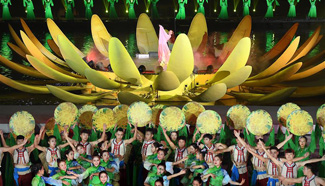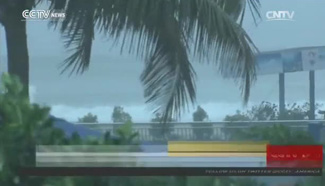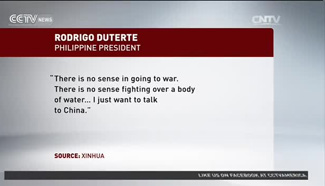By Spencer Musick
BEIJING, Oct. 18 (Xinhua) -- During the first set of the WTA final match of the 2016 China Open between Agnieszka Radwanska and Johanna Konta, the Chinese chair umpire had to halt play for several moments and admonish a group of spectators sitting in box seats to be quiet and sit down.
The spectators, perhaps unaware of the rules of proper court-side etiquette, continued to speak loudly despite the admonishments of the chair umpire, and the man continued to stand up in the box, only relenting when the gaze of the entire Diamond Arena turned his way, and fellow spectators admonished him in both Chinese and English to "sit down and shut up."
One man in particular appeared oblivious to the fact that his standing up and speaking to someone nearby was distracting Konta as she attempted to serve against one of the sharpest returners on the WTA circuit. To effectively manage her encounter with Konta needed a quiet court with no visible distractions as she played in the biggest final of her career, and thanks to one ignorant spectator, she was momentarily deprived of that environment.
While this incident was perhaps the most visible, the week long China Open saw repeated instances of cellphones ringing loudly during play, loud children behaving poorly and disrupting play, and people standing from their seats while play was ongoing.
Clearly, these spectators did not intend to be disruptive or create a difficult environment for the players. But the prevalence of these behaviors, even after the China Open is over a decade old, demonstrates that much work remains to be done in terms of educating Chinese spectators about correct court-side etiquette for tennis matches.
What separates a tennis match from say, a football game, is that the former requires an extraordinary amount of concentration from only two or (in the case of a doubles match) four players.
A well-executed serve requires a player to have not only impeccable technique and athleticism but also a laser-sharp focus on where she intends to send the ball. The player must follow her opponent's movements as she serves and then track the small ball on return. A visible or auditory distraction of any kind can have seriously detrimental implications for a player's ability to maintain peak mental preparedness for whatever her opponent sends across the court.
Another way of saying it is that a serve or a return is only as strong as its weakest link. Any distraction generated by the spectators can potentially throw a player's attention off, even if only for a split second. And a split second can make all the difference in a tennis match.
The rules and conventions that govern tennis spectator behavior at court-side are not in any way arcane or counter-intuitive. In fact, most fall under the umbrella of common sense and decency. Spectators should remain seated and quiet at all times while the ball is in play. They should silence their cellphones and never under any circumstances answer a call during play. Even spectators seated in the upper echelons of the arena are expected to follow these conventions; sound carries in a quiet arena more than one might realize.
While the great majority of spectators at the most recent installment of the China Open did not exhibit these bad behaviors, it only takes one person answering a cellphone in an otherwise quiet arena to distract players and create a real disruption, disrespectful most of all to the players, but also to other spectators.
The China Open is a major international tournament whose prestige on the circuit continues to increase year after year as the popularity of tennis (and its star players) surges in China. It is abundantly clear that the number of Chinese tennis fans is growing accordingly as the sport is popularized. This is evidenced by the large numbers of young people, many with tennis rackets in hand, in attendance in Beijing and in other tournaments around the country, including the Shanghai Rolex Masters on the ATP side, and the Tianjin and Wuhan Opens on the WTA side.
If provided with a little more education about the sport, and about how to enjoy it respectfully, Chinese fans can easily supply the enthusiasm needed to fuel the healthy, long-term development of tennis in the country.










